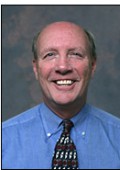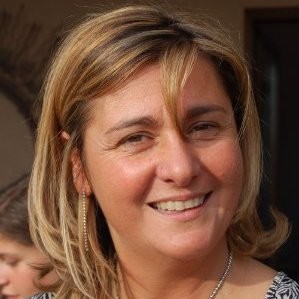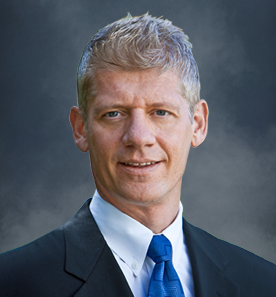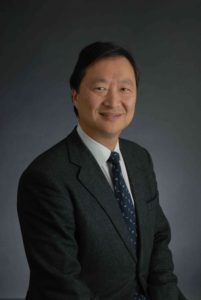
Bridging the Frontier Bob Smith, Executive Director
Bob Smith is Executive Director of the ESD Alliance responsible for its management and operations. Previously, Bob was senior vice president of Marketing and Business Development at Uniquify, responsible for brand development, positioning, strategy and business development activities. Bob began his … More » SEMI Panel Touts Innovation from Electronic System Design EcosystemMarch 11th, 2021 by Bob Smith, Executive Director
SEMI’s first Technology Unites Global Summit last month offered a wealth of presentations celebrating the semiconductor industry. One standout panel expressly highlighted the innovations of the small but mighty electronic system design (ESD) community represented by the ESD Alliance, a SEMI Technology Community. The panel, “Innovating for the Future! Electronic System Design –– Where Microelectronics Begins,” promoted the importance of the Electronic System Design ecosystem and its far-ranging reach throughout the global electronic products market segment. While promotion of our ecosystem was the goal, the panel offered a great opportunity to listen to six remarkable individuals, all of whom have made their mark within our community.
Moderator Nitan Dahad, Editor-in-Chief of embedded.com and Correspondent on EE Times, pointed out in his opening remarks that the system design ecosystem is evolving and sits at the foundation of almost everything that needs to be created. Chip design is more complex as the industry moves beyond the classical definition of Moore’s Law, he noted, and our part of the market produces many creative entrepreneurs who use their immense talents to solve these challenges. “It takes some of the smartest people in the world to do it because you need to be knowledgeable of both hardware and software,” agreed panelist Dean Drako, President and CEO of Drako Motors and IC Manage. Four other entrepreneurs joined Nitin and Dean for an animated discussion about where the industry goes from here and how it will deal with the tidal wave of complexity and activity coming our way. I’ll save that for my next blog post and use this post to introduce the panel personalities and give a glimpse of the creative drive in our small community. Nitin asked long-timer Rick Carlson, Vice President of Sales at Verific, how he got into system design. Rick grew up in Chicago and attended IIT there, not the IIT in India, he quipped. He moved to California in the early 1970s working for a company time sharing servers on slow networks, the equivalent of today’s cloud computing resources. Rick’s first job in EDA was with CALMA, a company offering computer-aided solutions for chip design, replacing light boxes and Rubylith film. At Verific for 17 years, Rick describes it as the Oracle or Salesforce of system design, providing data structures and an API for tool development now used at many semiconductor, large systems and FPGA companies. I should mention that Rick took a timeout from our community in 1988 after stints at Mentor Graphics (Siemens EDA) and Daisy to start Flexlm, now FlexNet. Dean, a serial entrepreneur, has a passion for the EDA (or system design that includes IP, too) sector and believes it is the greatest business in the world because it’s the confluence of hardware and software design. He grew up outside of Detroit, Mich., close to the automotive industry, and began his career at Apple designing chips. He started DAI (now Cadence) to offer an integrated debug environment for the Verilog HDL. From there, it was Barracuda Networks in the IT world, IC Manage with its design management tools and Eagle Eye Networks for cloud video surveillance. Readers may recognize the name Drako Motors, Dean’s launch into the high-end electric sports car market. Drako cars use a four-motor control or one per wheel to control the handling of forward and backward torque. Several panelists voiced interest in owning a Drako Motors sports car! Nitin moved on to Anna Fontanelli, Founder and CEO of Monozukuri. Anna, a specialist in deep-submicron silicon technology and design tools, leads a group of engineers in Rome that recently introduced an integrated IC and packaging co-design tool called Genio. Her experience at ST Microelectronics and Mentor Graphics spans 25 years managing complex R&D organizations and programs that brought a number of EDA design solutions to market. She led a marketing group, for instance, that launched a board and FPGA co-design tool for I/O planning and in another role, managed the development and deployment of three generations of IC and package co-design tools. Ted Miracco, CEO at Cylynt, came next. His career started in high school, he maintained, due in large measure to the work his father was doing at IBM. He followed that inspiration to Carnegie Mellon where he studied electrical engineering and computer science, though knew then he wanted to be an entrepreneur. Microwave and RF design expertise got him into defense electronics that led him to an EDA startup called EESof (now Keysight). Once EESof was acquired by HP, Ted and other engineers founded AWR (then Analog Wave Research, now part of Cadence). AWR ran into a big challenge trying to protect its software copyrights or IP theft and ended up getting a summary judgement against ZTE, a company using the technology illegally. Once AWR was acquired by Cadence, Ted co-founded his next startup Cylynt (then known as SmartFlow), motivated by the threat of software IP theft to the Semiconductor and EDA industry. He observed that the industry can’t develop technology if it can’t protect its IP. Our last panelist was Aki Fujimura, CEO of D2S, a well-known member of the community, who said his breakthrough realization about design automation came from an AI class at MIT in the late 1970s. He was hooked and transformed his thinking about what software can do. Aki founded Tangent, a place and route company acquired by Cadence, then went on to Pure Software for four years where Reed Hastings of Netflix fame served as CEO. Once he realized his home was EDA, he was back working at Simplex Solutions, also acquired by Cadence where he became CTO helping incubate ideas for new design tools. D2S was one of those ideas and a Cadence spin out. Today it provides GPU acceleration software and hardware that sits right outside of design in the manufacturing space. According to Aki, GPU acceleration is a great way to scale and continue to benefit from Moore’s Law for fabs and mask shops as well as semiconductor equipment manufacturers. This is an unusually long post and time to wrap up. Watch this space to read more on the engaging hour-long panel hailing the accomplishments of electronic system design and those of us in it. To learn more about the ESD Alliance, a SEMI Technology Community, and our other programs and initiatives, visit the ESD Alliance website or contact me at bsmith@semi.org. Engage with the ESD Alliance at: Website: www.esd-alliance.org ESD Alliance Bridging the Frontier blog Twitter: @ESDAlliance |
|
|
|||||
|
|
|||||
|
|||||












